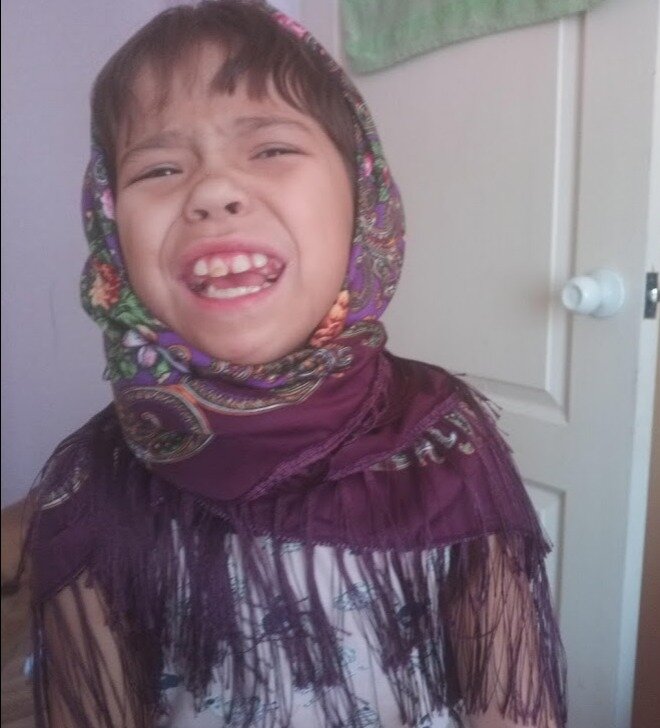How an autistic child is sick. Our experience.

Good day to all! Not so long ago I came across an article that people with autism live less. This is due to the fact that they do not understand the signals of their body well, they do not know how to explain where and how they have pain, and often the disease is detected already in a neglected state, when treatment does not always help. Of course, I immediately tried on the new information on my daughter (autism, mild mental retardation, ADHD, alalia) and I was scared.
Alice really can’t always show exactly where she hurts.
When she was 2 -2.5, I called an ambulance three times because I couldn’t understand why she was crying. Moreover, she was not just crying, she was sobbing, screaming, it was impossible to calm her down. They never found anything in the hospital, after three or four hours she calmed down and everything was fine again. The tests are normal, X-rays, ultrasound, everything is normal. What it was for me still remains a mystery.
Things are easier with hands and feet, for example, if she hit, she will clamp her hand over this place. Things are much worse with what’s inside. For example, if your head hurts, then Alice is just acting up or crying, the same thing happens if your stomach hurts. In this case, it is already difficult to differentiate what specifically bothers. If the stomach is soft and when pressed, it does not show signs of anxiety, then most likely the head, but after all, there is different pain in the stomach, the stomach can hurt and remain soft at the same time. The same difficult situation with teeth, she can’t distinguish a toothache from a headache, or she can, but she finds it difficult to explain. It was also difficult with snot when the daughter was smaller. She just smeared them on her face, refused to wear a handkerchief at all, as a result, she rubbed her nose hard and cried already from the fact that it hurts. It was also difficult to smear the rubbed cream, Alice was afraid, hysterical and then erased the cream from her face. Usually, I waited for her to fall asleep and quietly smeared her, then woke up a couple more times during the night to treat with cream so that by morning the skin would more or less recover. Once, in a pharmacy, I came across a cream that removed chafing overnight. It was a delight! But, to my regret, when it was over, I threw away the package, confident that I would never forget its name. I was wrong. When Alice got sick and I went to the pharmacy for the cream, it turned out that my memory was as clean as a white sheet. I reviewed all the creams, but I did not find the cherished one. Fortunately, at this time Alice had already started using a handkerchief and water and the urgent need for this cream disappeared. Thus, it was only closer to 5 that she realized the connection between snot and the fact that her nose would hurt if she smeared them or wiped them with her sleeve. At first she agreed to use a handkerchief or a napkin, and then we came to the fact that we washed off the snot with tap water, so there is less friction and it is easier to get rid of chafing. Now, if snot appears, Alice herself comes to me, takes me by the hand and leads me to the bathroom, or even goes to wash them off herself. I breathed a sigh of relief.
With baby teeth, I almost panicked at first. When Alice’s first baby tooth started to wobble, she was just naughty for the first day, but then she guessed and started trying to explain what was bothering her. She took my hand and tried to put it in her mouth so that I could get this tooth. The tooth was still strong and I couldn’t pull it out right away. Here, however, I got my bearings quickly and we went to look at this tooth in the mirror. I showed Alice the tooth and at first I shook it myself, then she realized what to do and shook it herself until she pulled it out. She brought the tooth to me, there was blood all over her face, but she was happy that she pulled it out. After that, she pulled out all the baby teeth herself, carefully loosening them before that. To this day, she likes to look at her teeth in the mirror, sometimes asks others to open their mouths and examines their teeth. Teeth are generally a separate story, even two, because it didn’t fit into one article, I told about how we treated our daughter’s teeth under anesthesia (you can read here and here).
In order for the child to learn how to convey to adults the information that he has pain, AVA therapy, for example, suggests that the first thing to do is to enter the card “it hurts”, while it requires lightly pinching the child or otherwise doing a little pain and giving the right card. I was afraid to act this way and went the longer way. Every time Alice hit, I always clearly pronounced and still pronounce “it hurts” and ask to show where it hurts, voicing what hurts.
Now she can quite easily show where it hurts her (if she can understand it herself, it’s still difficult with a headache). In addition, what pleases me, Alice tries to explain where she hurts, she examines her body herself, looking for the cause, the place that bothers. I really hope that in the process of growing up, she will have more and more tools to understand her body’s signals and explain them.
Comments: